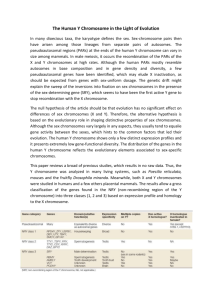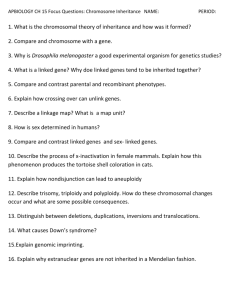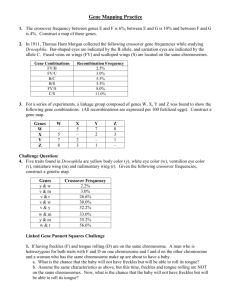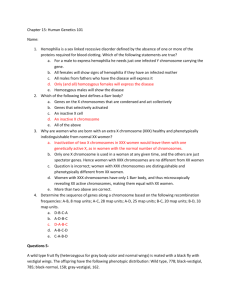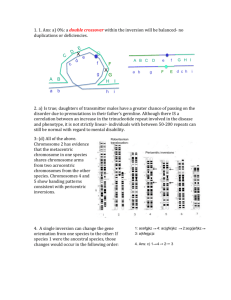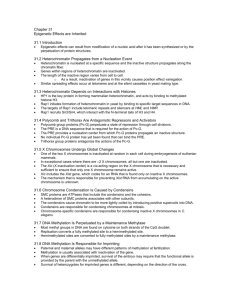Evolutionary epigenetics of the Drosophila Y chromosome Daniel L
advertisement
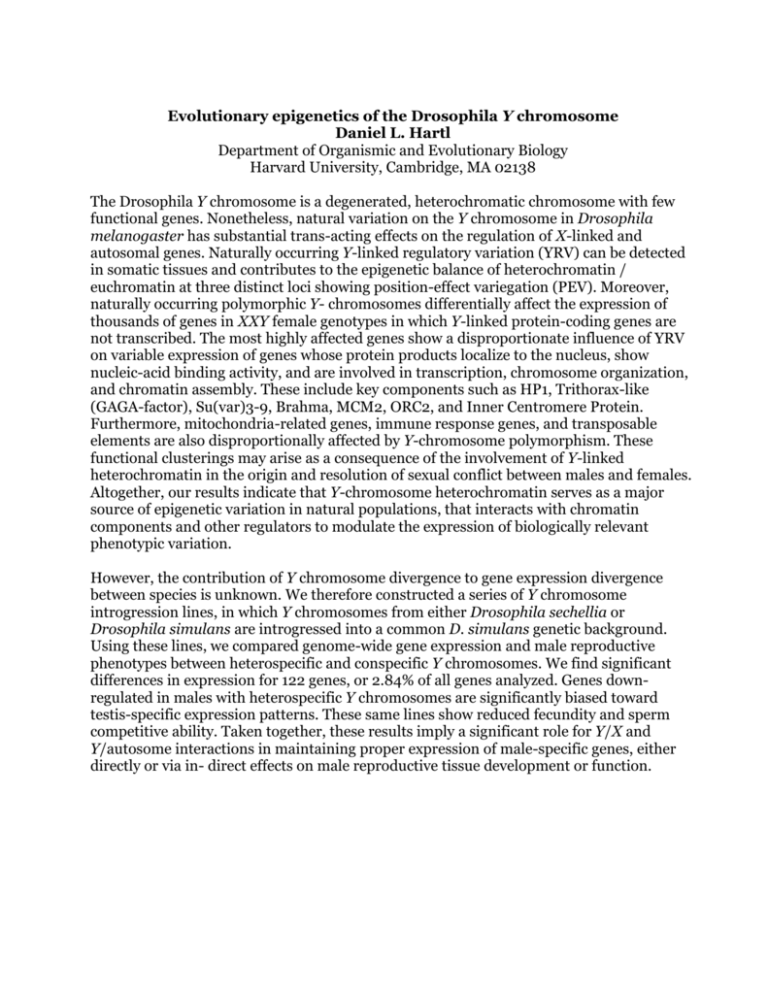
Evolutionary epigenetics of the Drosophila Y chromosome Daniel L. Hartl Department of Organismic and Evolutionary Biology Harvard University, Cambridge, MA 02138 The Drosophila Y chromosome is a degenerated, heterochromatic chromosome with few functional genes. Nonetheless, natural variation on the Y chromosome in Drosophila melanogaster has substantial trans-acting effects on the regulation of X-linked and autosomal genes. Naturally occurring Y-linked regulatory variation (YRV) can be detected in somatic tissues and contributes to the epigenetic balance of heterochromatin / euchromatin at three distinct loci showing position-effect variegation (PEV). Moreover, naturally occurring polymorphic Y- chromosomes differentially affect the expression of thousands of genes in XXY female genotypes in which Y-linked protein-coding genes are not transcribed. The most highly affected genes show a disproportionate influence of YRV on variable expression of genes whose protein products localize to the nucleus, show nucleic-acid binding activity, and are involved in transcription, chromosome organization, and chromatin assembly. These include key components such as HP1, Trithorax-like (GAGA-factor), Su(var)3-9, Brahma, MCM2, ORC2, and Inner Centromere Protein. Furthermore, mitochondria-related genes, immune response genes, and transposable elements are also disproportionally affected by Y-chromosome polymorphism. These functional clusterings may arise as a consequence of the involvement of Y-linked heterochromatin in the origin and resolution of sexual conflict between males and females. Altogether, our results indicate that Y-chromosome heterochromatin serves as a major source of epigenetic variation in natural populations, that interacts with chromatin components and other regulators to modulate the expression of biologically relevant phenotypic variation. However, the contribution of Y chromosome divergence to gene expression divergence between species is unknown. We therefore constructed a series of Y chromosome introgression lines, in which Y chromosomes from either Drosophila sechellia or Drosophila simulans are introgressed into a common D. simulans genetic background. Using these lines, we compared genome-wide gene expression and male reproductive phenotypes between heterospecific and conspecific Y chromosomes. We find significant differences in expression for 122 genes, or 2.84% of all genes analyzed. Genes downregulated in males with heterospecific Y chromosomes are significantly biased toward testis-specific expression patterns. These same lines show reduced fecundity and sperm competitive ability. Taken together, these results imply a significant role for Y/X and Y/autosome interactions in maintaining proper expression of male-specific genes, either directly or via in- direct effects on male reproductive tissue development or function.

